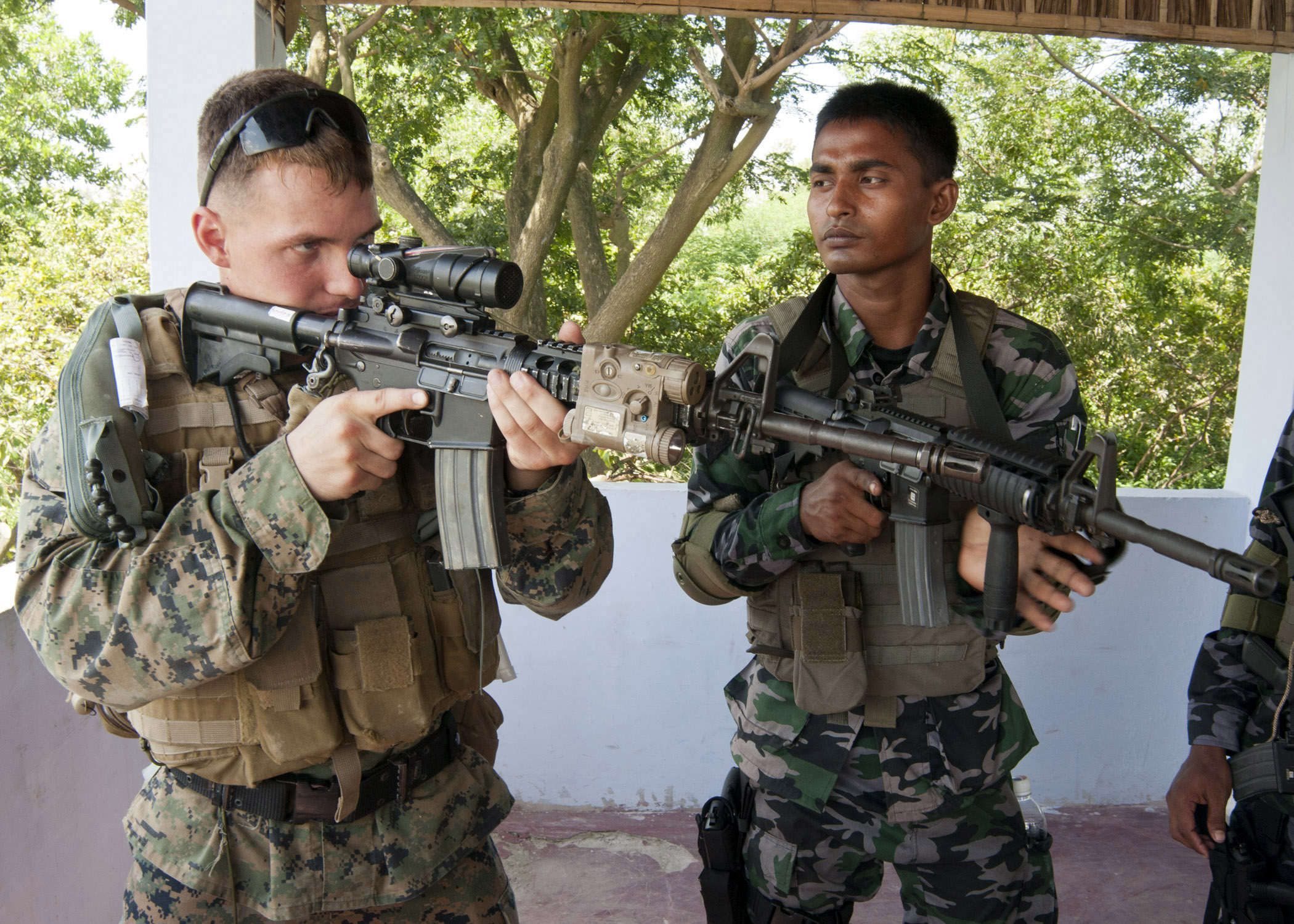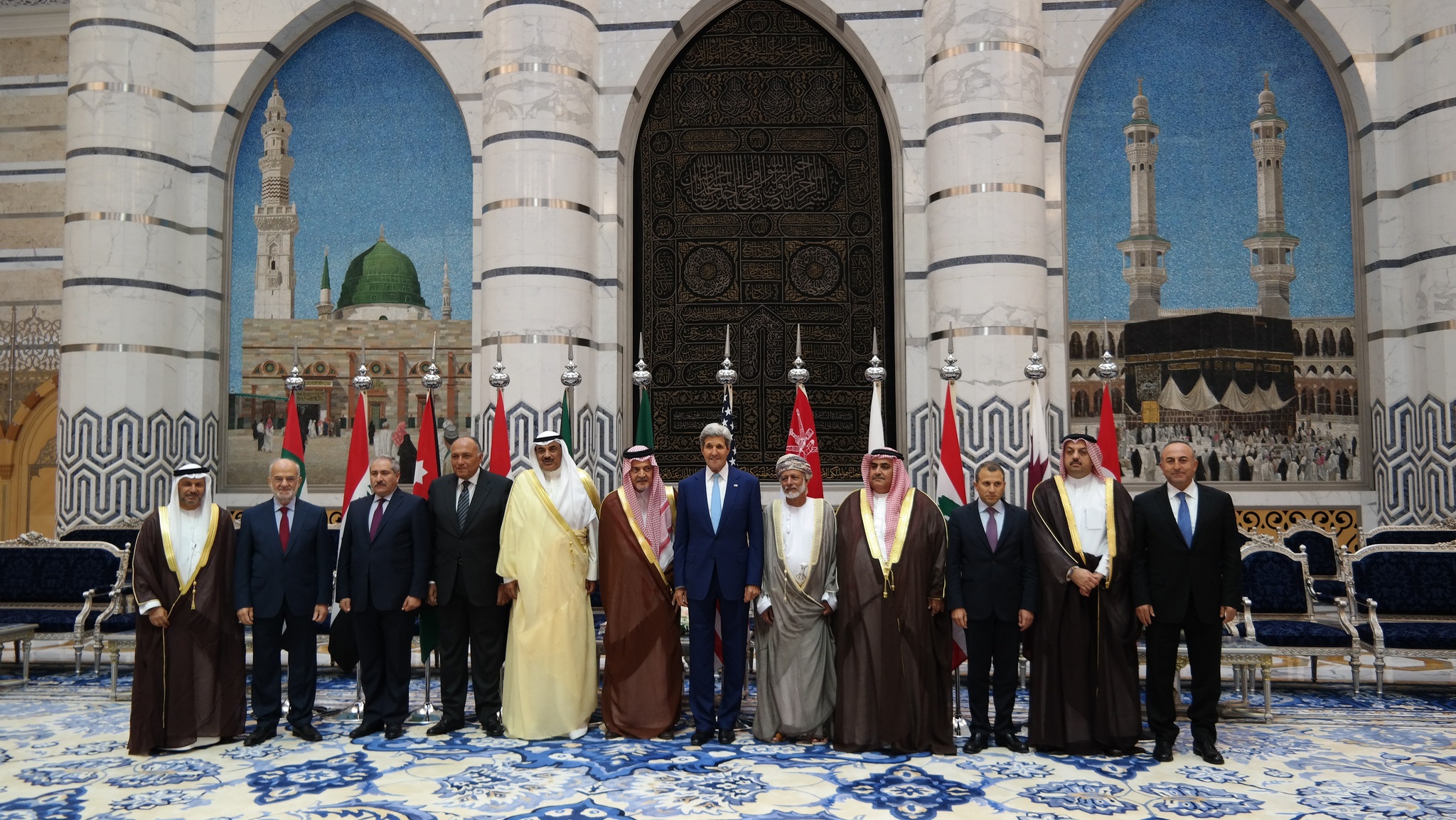Governance and Security Sector Assistance: The Missing Link—Part I
Editor's Note: We’re breaking new ground here at the Foreign Policy Essay—a two-part series. So many of the problems identified in past Foreign Policy Essays and for Lawfare in general revolve directly or indirectly around the question of allied security forces. Competent local security forces can mitigate problems like terrorism and regional stability. Where they work well (let’s say Denmark—we all like Denmark, right?), then U.S.

Published by The Lawfare Institute
in Cooperation With

Editor's Note: We’re breaking new ground here at the Foreign Policy Essay—a two-part series. So many of the problems identified in past Foreign Policy Essays and for Lawfare in general revolve directly or indirectly around the question of allied security forces. Competent local security forces can mitigate problems like terrorism and regional stability. Where they work well (let’s say Denmark—we all like Denmark, right?), then U.S. policy is simple: we cooperate with our ally, helping where we can but asking it to bear part of the burden in return.
Often, however, allied forces cannot maintain order in their own country, let alone help solve broader security issues. In some countries they are incompetent, in others politicized, and in still others at least somewhat hostile to the United States—at times all three. Understandably, given their importance, the United States continues to pour money into helping improve local security forces. Yet they still often fail, at times disastrously. In this first part of the series, Gordon Adams of American University and Richard Sokolsky of Carnegie argue that the United States often ignores the problem of governance when it helps allied security forces: too often resources go to governments that are venal or incompetent, and U.S. efforts are wasted.
***
Introduction
If there is one proposition over the past 25 years that has commanded a bipartisan and near-unanimous consensus among U.S. government officials, foreign policy wonks, and the commentariat, it is that failing and failed states can pose serious threats to U.S. national security. This challenge is identified as one of the top U.S. foreign policy priorities in every authoritative U.S. government national security document issued over this period—from the President’s U.S. National Security Strategy and the Department of State’s Quadrennial Diplomacy and Development Reviews (QDDRs) to a slew of white papers from the U.S. Agency for International Development (USAID), the Pentagon’s National Defense Strategy, and a stream of “interagency” papers on ungoverned spaces.
It is somewhat discouraging, given the number of trees cut down on this subject—not to mention the bandwidth it has consumed among U.S. government officials of both parties—that administrations have struggled to define an integrated strategy and effective set of tools to deal with the crisis of poor governance and resulting insecurity and conflict in large swaths of the Middle East and Africa.
Disconcerting, but not surprising.
It is exceptionally difficult for outsiders, even those as powerful as the United States, to help other countries improve their governance, especially in the midst of civil wars. And it is harder still when the cure that is offered starts from the wrong end of the problem, and, in doing so, only makes the patient worse.
It is our contention that by defining the problem as one of “security first,” with inadequate attention to the requirements of good governance, the United States has allowed the tail of strengthening the militaries of weak states and reforming their security sectors to wag the dog of strengthening governance. In many countries, the result has too often been weaker governance and even weaker security. In our view, governance is the critical target. U.S. security assistance programs need to be embedded in a larger strategy of promoting good governance. One useful approach would be to improve the linkage between security assistance, which the U.S. provides in abundance, and broader measures to strengthen the effectiveness, efficiency, accountability, and uncorrupt nature of the recipient country’s governance.
This article is part one of a two-part series. It describes shortcomings in the current U.S. approach to security assistance in the context of broader governance. Part two of the series will examine weaknesses in the U.S. government’s current security assistance policies and programs and recommend measures the U.S. government should take to develop more coherent strategies and effective tools for addressing the interrelated challenges of improving governance and security.
It’s Governance, Stupid
The effectiveness of outside security assistance to the military forces and security sectors of weak and fragile states is strongly dependent on the broader governance capabilities of the recipient states. While U.S. policies and programs tend to assume that security must be achieved before effective governance in weak states is even possible, the reality may be the reverse: the effectiveness of security assistance may depend on more capable governance. As two U.S. officials recently observed with respect to security assistance in Somalia: “Without civilian governance structures to support them, the training of security forces could, at worst, prove destabilizing to the Federal Government and, at best, be a waste of donor funds... To press Somalia to develop a military without a functional government, or a military that does not reflect the Somali political context on the ground is a recipe for folly.”
While U.S. policies and programs tend to assume that security must be achieved before effective governance in weak states is even possible, the reality may be the reverse: the effectiveness of security assistance may depend on more capable governance.
The probability that “governance first” may be key to the effectiveness of security assistance is strongly reinforced by recent research by the RAND Corporation evaluating the effectiveness of U.S. security assistance programs, and by an analysis of the relationship between governance and the risks of terrorism, written by two academics. RAND’s 2013 broad statistical review of the effect of U.S. programs, which attempted to define “what works best” in security assistance, found that one of the strongest factors in making such assistance effective was “high governance indicators,” specifically “the degree of democratization and the strength of governance indicators.”
This conclusion was reinforced by a 2015 RAND study of the effects of security sector assistance outcomes in Africa, which noted that “weak and autocratic states have difficulty making positive use of security sector assistance and in many studies, such assistance was found to have potentially destabilizing effects” because it could undercut legitimate governance, exacerbate inter-communal tensions, or diffuse the assistance to non-state actors, as happened recently in Iraq and Yemen.
A correlation analysis carried out by Cullen Hendrix and Joseph Young concluded that “terrorist attacks are more frequently targeted at states with large, technologically sophisticated militaries but less frequently targeted at states with higher bureaucratic and administrative capacity.” All this research suggests that reinforcing the ability of a state to govern effectively, efficiently, accountably, and incorruptly provides a critical framework within which U.S. security assistance (as well as social and economic assistance) should be embedded.
Today, U.S. foreign assistance policies for security, social support, or development are not organized around the capacity of the recipient country to govern itself. The broad array of U.S. foreign assistance programs is divided largely between those that target the security forces of other countries and those that target social and economic issues and development. In 2014, overall U.S. foreign assistance was $32 billion, according to our calculations from State Department/USAID data. The largest single wedge, nearly a third, went to what State/USAID call “investing in people”—largely health education and social services. Roughly a quarter was allocated to “peace and security,” which broadly means security force and sector assistance. Another 20% went for humanitarian assistance and just over 10% for “economic growth” (largely agriculture programs). The smallest share, some 6%, was explicitly identified as funding “governing justly and democratically,” with “good governance” being an even smaller portion of that share.
While it is entirely possible, even likely, that some of the funding in the other wedges supports the goal of good governance, that outcome is not the primary intention, as State/USAID define the objectives. USAID is the only U.S. foreign assistance institution that has directly tackled the question of governance. The USAID approach, however, is inadequate and incomplete—it does not make governance the organizing concept for U.S. foreign assistance. Instead, it promotes “democracy,” a standard most recipient countries fall short of meeting, and “human rights,” which, though important, may only be achievable by effective, responsive governance. The USAID strategy does not focus on the effectiveness and efficiency of governance or on standards of accountability and responsiveness that fall short of democracy but would represent real progress in governance. And it does not link the question of governance to the existence or absence of “security” in a recipient country. Providing foreign assistance in the absence of good governance is also dangerous because it fuels corruption—the additional aid dollars flowing into the country provide another avenue for the ruling elite to steal and/or use the money as patronage.
Moreover, the USAID strategy on governance is a USAID approach. It was not developed jointly with the State Department, which oversees the lion’s share of foreign economic and security assistance resources. State Department documents recognize that failed and fragile states are an important security challenge. But it is by no means clear that strengthening the governance of these countries is a top priority in State’s day-to-day diplomatic engagement. Although the most recent QDDR provides significant discussion of the problem of “governance,” it falls short of defining governance as the organizing context for effective development or security assistance. Moreover, professional education and training for U.S. diplomats does not include a focus on governance. At the embassy level, the “country team” prepares an “Integrated Country Strategy,” but it is not clear that governance is a centerpiece of that strategy, judging by the small portion of foreign assistance devoted to improving good governance.
In sum, research indicates that the success of security assistance may depend on the viability, strength, effectiveness, and accountability of the recipient country’s governance. The United States does not, however, have a strategy or a coherent approach to having a positive effect, through its foreign assistance, on governance. Moreover, as important as governance is to effective foreign assistance, the broader governance challenge is daunting. The United States cannot simply step in and “fix” failed and failing states in the Middle East or anywhere else. It is hubristic, dangerous, and naïve to think otherwise. Further, foreign assistance is often used to buy influence, promote other important U.S. strategic goals, and secure the support of the recipient countries for those goals.
The United States cannot simply step in and “fix” failed and failing states in the Middle East or anywhere else. It is hubristic, dangerous, and naïve to think otherwise.
Conclusion
Poor governance and weak institutions are extraordinarily complex, multi-dimensional problems and only the countries themselves can permanently reform them. This is a harsh reality for Americans who incessantly call for a Marshall Plan for the Middle East or a more hairy-chested, interventionist U.S. approach to put the region back together again. But if the physicians must first “heal themselves,” the United States at least has an obligation to “do no harm.” And with more intelligent policies America could help on the margins to meliorate poor governance and to prevent weak states from becoming failed states.
Moving away from a business-as-usual approach to improving governance and security sectors will face strong bureaucratic and political headwinds. The most effective strategies will require policy integration and coordination from the top-down, a more directive approach that inevitably threatens organizations with a vested interest in maintaining a status quo that gives them greater influence in the bottom-up development of country programs. Moreover, senior officials in the national security agencies and at the White House value the flexibility to use foreign assistance to promote short-term and tactical diplomatic goals or respond to unexpected emergencies, which puts a premium on maintaining easy access to funds that are not committed to long-term programs to build better governance and security sectors.






